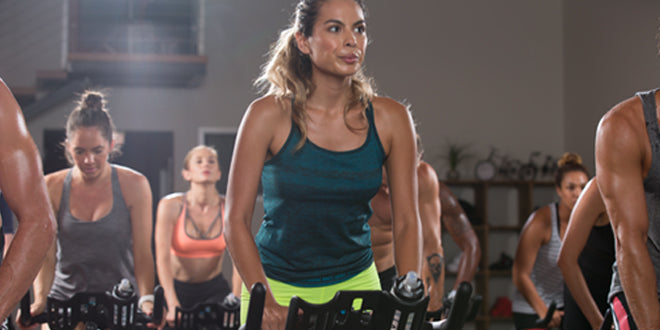By Kate Amos Smaller spaces, less equipment, fewer patrons—when it comes to boutique fitness studios, sometimes less is more. These clubs generally specialize in just one or two activities, offering highly-trained instructors, sport-specific equipment and a dedicated clientele. There are boutique studios that specialize in nearly every fitness activity you’ve ever heard of—even some you haven’t! Whether you’re into yoga, barre, aerial acrobatics, Spinning®, CrossFit®, kettlebells, rock climbing, kickboxing or the hot new trend that has yet to even make the pages of the New York Times, there’s a boutique facility for you.One of the benefits of specialization is that these facilities can offer a more personalized experience tailored to specific needs and goals. Step into a boutique Spinning studio, and you are likely to see the latest power-meter-equipped bikes lined up in front of a flashy big screen displaying all sorts of metrics. The local gym might offer mat Pilates classes, but a boutique studio can provide a full range of reformers, chairs, barrels and towers. For those gear-heads who are truly dedicated to their sport, having access to the latest technology is hugely valuable, and it is just these sorts of investments that are attracting An ever-increasing number of clients are flocking to these boutique studios. In fact, according to the 2014 International Health, Racquet & Sportsclub Association’s “Health Club Consumer Report,” boutiques now comprise 21% of the club market, a number that is expected to continue to rise in the coming years.While the boom in boutique fitness clearly shows that these new types of facilities are meeting the fitness needs of more and more people, they are not for everyone. For one thing, boutiques are typically far more expensive than traditional health clubs. That shiny equipment and low client-to-instructor ratio don’t pay for themselves, a fact that is borne out by the relatively high monthly or per-class rates boutique studios typically charge. Furthermore, while boutiques attract hard-core enthusiasts who are dedicated to a particular sport or workout activity, they don’t have as much to offer to the average gym-goer who is just looking to stay in shape. Just as not all road cyclists need a pro-level carbon bike for their weekend coffee shop rides, not all gym-goers need flashy, new, specialized equipment for their lunchtime workout. Traditional clubs offer a wider variety of activities, giving clients the opportunity to try out different workouts, or regularly mix it up with cross-training, all under one roof.Finally, boutiques often have more limited hours and fewer locations. A busy working parent trying to squeeze in a workout between other obligations is unlikely to find a boutique studio open 24 hours right next to their office.With those considerations cropping up in consumers’ minds, a curious new trend is emerging: many fitness enthusiasts are seeking the best of both worlds, regularly attending both a boutique studio and a more traditional health club. These patrons are choosing to maintain their more affordable gym memberships while also attending classes or workouts at boutique facilities, which often offer the option of paying per-class, or purchasing class bundles, rather than a more traditional monthly membership.Are you a boutique studio owner? For more tips for fitness entrepreneurs, subscribe to our newsletter!






Leave a comment
This site is protected by hCaptcha and the hCaptcha Privacy Policy and Terms of Service apply.